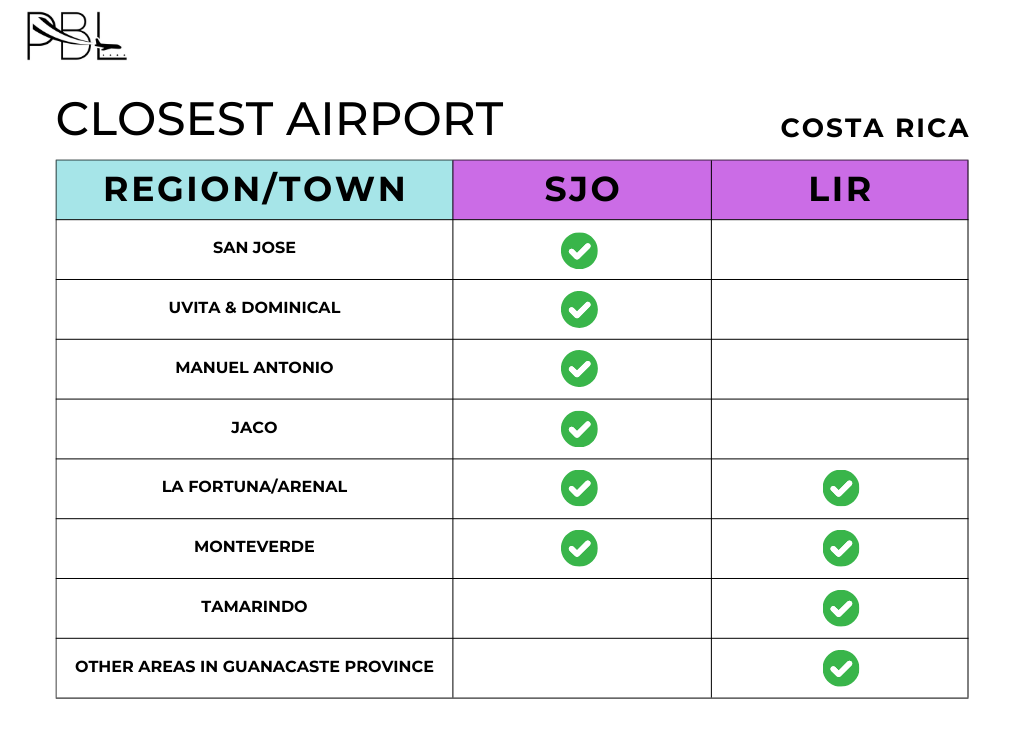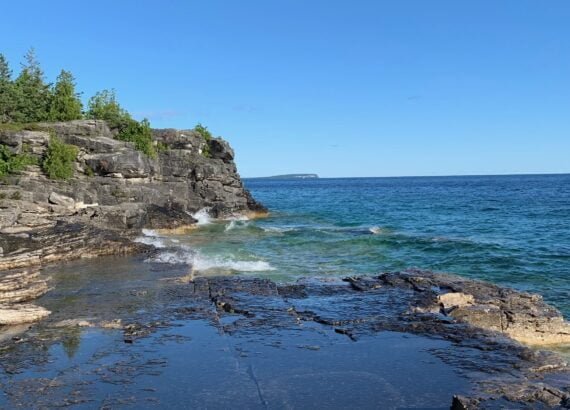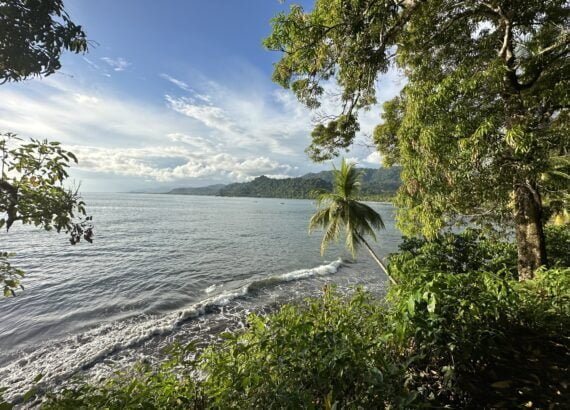Costa Rica Travel Guide: Important to Know Before You Go
Heaven is a place on earth in Costa Rica. It has an abundance of adventure & activity for the thrill seekers, tranquil hot springs and yoga retreats to feed the soul, thousands of animal and insect species to keep all ages entertained (or scared), and beach sunsets that songs are written about.
Rainforests, volcanoes, jungles, beaches… I could continue listing everything that makes this country beautiful, but trust me when I say, you need to see it for yourself! Use this Costa Rica travel guide to plan your trip to Costa Rica!
This Costa Rica travel guide will help you organize and plan your adventure in Costa Rica. Make sure to also check out my related blog posts on Costa Rica for some inspiration and itineraries in Costa Rica!
Some links in this Costa Rica guide are affiliate, if you click them I may get a small commission at no extra cost to you.

My Costa Rica Ratings
- Relaxation: 10/10
- Activity/adventure: 10/10
- Entertainment: N/A/10 – I did not partake in any “entertainment” type experiences (the adventure took all my energy haha).
- Food/drink: 9/10
When to Visit Costa Rica
The choice is up to you, each Costa Rica season offers something special. Costa Rica has two seasons, dry season and rainy season.
1. Dry Season: January – April (17-35°C, 62-95°F)
Dry Season is Costa Rica’s busiest season. Tourists are drawn to Costa Rica with promise of blue skies and sunshine. Although, named the dry season, rain is not impossible and being there in April myself, I experienced rain for a couple of afternoons/evenings.
The dry season is the longest on Costa Rica’s Pacific Coast. If venturing to other areas the rainy season may start earlier than May. Keep in mind that it can also be colder in the mountainous regions ie. Monteverde.
2. Rainy Season: May – December (20-30°C, 68-86°F)
Rainy Season can be considered Costa Rica’s most beautiful, the vegetation is truly LUSH. Costa Rica’s rainy season sees less tourists, however, depending on the time you visit, rain may only happen for a few minutes to an hour per day.
My family was in Costa Rica in May and experienced at maximum 1-2 hours of rain per day. The months with the most rain are September and October, I would avoid these months if you plan to have a beach vacation. Don’t forget your rain jackets!
Do not let either season dissuade you from visiting, they will both give you an amazing vacation.
Costa Rica Packing List
Click here for my detailed Costa Rica packing list.

How to Get to Costa Rica
Flying to Costa Rica
Flying is the number one way to get to Costa Rica (unless you plan to drive for days from North America, patiently and safely, which I do not have any advice for… Please make sure you know how to do this before embarking..).
Costa Rica has two major international airports that have regular flights from most airlines. Deciding which airport to fly into will be a time saving decision of your trip.
I created this chart to help you decide which airport is best!

1. Juan Santamaría International Airport also known as SJO is just outside of the capital city; San José, Alajuela province.
This airport sees the most traffic and usually has cheaper flight options. If you are planning to spend time on the Caribbean coast, Manuel Antonio National Park, the Osa Peninsula and South Pacific region, you will want to fly into SJO.
2. Liberia / LIR is the international airport located in Guanacaste Province. If your trip will consist mostly of the Guanacaste region ie. Tamarindo, Playa Flamingo (North Pacific coast), Nicoya Peninsula, Arenal this will be your go to airport.
Flights can be more expensive in and out of this airport. If money is not an issue and you would prefer to save on time instead, consider picking and choosing which airport to book in and out of depending on your desired itinerary!
3. Limón International Airport does not fly internationally despite its name.
Avianca Airline: Our Experience
Avianca Airline is Colombia’s major airline and flies to many destinations in Central & South America.
They also offer flights to countries in Europe and Asia, however, these mostly depart from Colombia.
We want to see the world. So we are not very picky when it comes to choosing a destination… this allows us the flexibility to wait for a flight deal and then book.
We found a round trip from Toronto (YYZ) to Juan Santamaria Airport (SJO), in Costa Rica for $420.00 CAD each (taxes included), which was a fabulous deal.
We did not purchase any cancellation insurance and we ended up having to change our trip due to a family emergency, which was an additional $200.00 CAD each.
Our experience with customer service while changing our flights was challenging at times. It was difficult to get ahold of someone and when we did get through, we were on hold for an hour at a time.
We were able to change our flights in the end, however, it did take many phone calls. Once aboard our flights, things went smoothly and Avianca was a lovely airline to fly with.
They provided drinks, snacks and sandwiches for free! I would fly with Avianca again, however, I would purchase the upgraded ticket to be able to change my flight if needing to.
Which Costa Rica Airport Do I fly Into?
We flew in and out of SJO. Our trip started in Arenal and La Fortuna, which was a 3 hour drive from SJO.
The drive is about the same length of time from LIR. We ended up spending more time on driving, as majority of the activities we did were closer to LIR, however, we saved money on our flights, as we found a deal for $420.00 CAD round trip with Avianca.
Getting Around Costa Rica
Renting a car & driving in Costa Rica
Your choice of transportation in Costa Rica is dependent on how much of the country you are planning to visit during your trip.
I enjoy the flexibility that comes with renting a car, however, it can be pricey and well outside of your budget.
Furthermore, to rent a car you need to be 23 years of age and need to have a valid driver’s license from your home province/state/country.
When searching for rental cars, it is very important to note that a lot of the companies do not include the required insurance within the quote. This can be frustrating to find out once you get to Costa Rica and have to pay even more for a car that you thought was ready to go. The company we went through was fully transparent and actually provided us with this warning.
Another tip to be mindful of, is third party websites (ie. Expedia/Kayak), will charge a small fee for whatever rental you take, go directly to the rental company’s website and avoid paying extra.
You may need to rent a 4-wheel drive depending on where you are planning to visit (please plan this in advance). We needed one as we were staying on a farm outside of Monteverde. You also need to download Waze, my Apple maps did not work in Costa Rica.

Although driving is my favourite option, it is very dangerous to drive in Costa Rica once it becomes dark. The roads are poorly lit and there are potholes/poor road conditions in some areas of Costa Rica. We also stumbled upon a few cows in the middle of the road… Always drive in the daylight and you should be fine!
Walking around Costa Rica
Walking is a great choice if you are planning to stay within a town or city. This is one of my favourite ways to explore places that are not tourist heavy and/or are off the beaten path.
If you are planning to spend all of your time in a town like Tamarindo, with beach and relaxation on your itinerary, walking will be just fine! However, if you are going to visit different regions, do day trips, and/or experience Costa Rica’s large national parks you will need a form of transportation.
This does not mean you need to rent a car, you can check out Costa Rica’s bus system/transit or purchase group tour transportation.
Shuttle Bus
If you are not comfortable with driving yourself, shuttle buses are a great way to get around Costa Rica. You can book shuttles privately or as a group.
My family rented a private shuttle for most of their stay in Costa Rica and were able to have the luxury of stopping at grocery stores along their routes. If you are on a group shuttle this may not be allowed. Prices vary depending on private/group and destination.
Some reputable Costa Rica shuttle companies: Interbus, Costa Rica Shuttle, & Tropical Tours Shuttles.
Taxi in Costa Rica
Costa Rica has red and orange taxis. Orange taxis are only found at the airport. They drop people off and pick them up for airport travel.
The red taxi is the official taxi of Costa Rica, they are regulated and found all over the country. If needing a taxi you should only get into a red one.
We took a taxi to and from the SJO airport and spent about $10.00 USD for 5 km of driving.
Beware of non-regulated taxis, just stick to the red taxi with the yellow triangle on the door and you should be good to go. Make sure that they turn the meter on once you get in to avoid being overcharged.
Spending Money in Costa Rica
Currency in Costa Rica
Costa Rica accepts both Costa Rica Colón (CRC) and United States Dollar (USD). We were unable to get CRC in Toronto before leaving so we brought USD with us, used it for the beginning of the trip (one taxi ride), and then found an ATM and used mostly CRC or credit card.
Although they accept USD, they will give you change back in CRC so you might not always get back the correct amount (based on the exchange and/or if they have the right amount on them). It is definitely better to use CRC.
As I currently write this, 1 CRC = 0.0019 CAD or 0.0015 USD. $1.00 CAD is about 530 CRC. Things in Costa Rica are very affordable and you will most likely need about 520,000 CRC or $1000.00 CAD per week as a mid-range traveler (a little more if travelling in a pair).
Access to an ATM is good in the tourist areas, cities and towns.
Banco Nacional, Banco de Costa Rica (Banco BCR) and Banco Popular are some of the common banks you will find. Scotiabank (Canada), Citibank and Bank of America (America) are present in Costa Rica but do not have ATM’s.
Food & Drink in Costa Rica
Food and drinks in Costa Rica are quite affordable.
A large meal costs around 6000-8000 CRC, which is about $12.00 – $15.00 CAD or $8.00 – $12.00 USD.
Tipping in Costa Rica
On your restaurant/bar bills there will be a service charge already built in, this is a 10% charge or called a “service tax”.
You can always go ahead and add a little extra if you’d like. Most locals do not add more of a tip.
Gas/Fuel in Costa Rica
If you are renting a car be ready to pay for gas! One thing I found amazing was that you pull up at the gas station and the gas attendants fill up your car for you, clean your windshields and check your tires.
I have never seen this done before, I was so excited. We also tipped them for this, although it is not expected!
Average gas prices currently are $1000 CRC per litre. ($1.93 – 2.00 CAD per litre / $1.42 – $1.47 USD per litre). Updated December 2023.
Busy? Pin the Costa Rica Travel Guide for later!
Final Thoughts on Your Costa Rica Travel Guide
Costa Rica is one of the most beautiful countries I have ever experienced. The country is not only full of phenomenal sights and amazing food, but also wonderful people who are ready to help you any chance they can.
I felt safe and well taken care of in Costa Rica and I cannot wait to go back next year!






